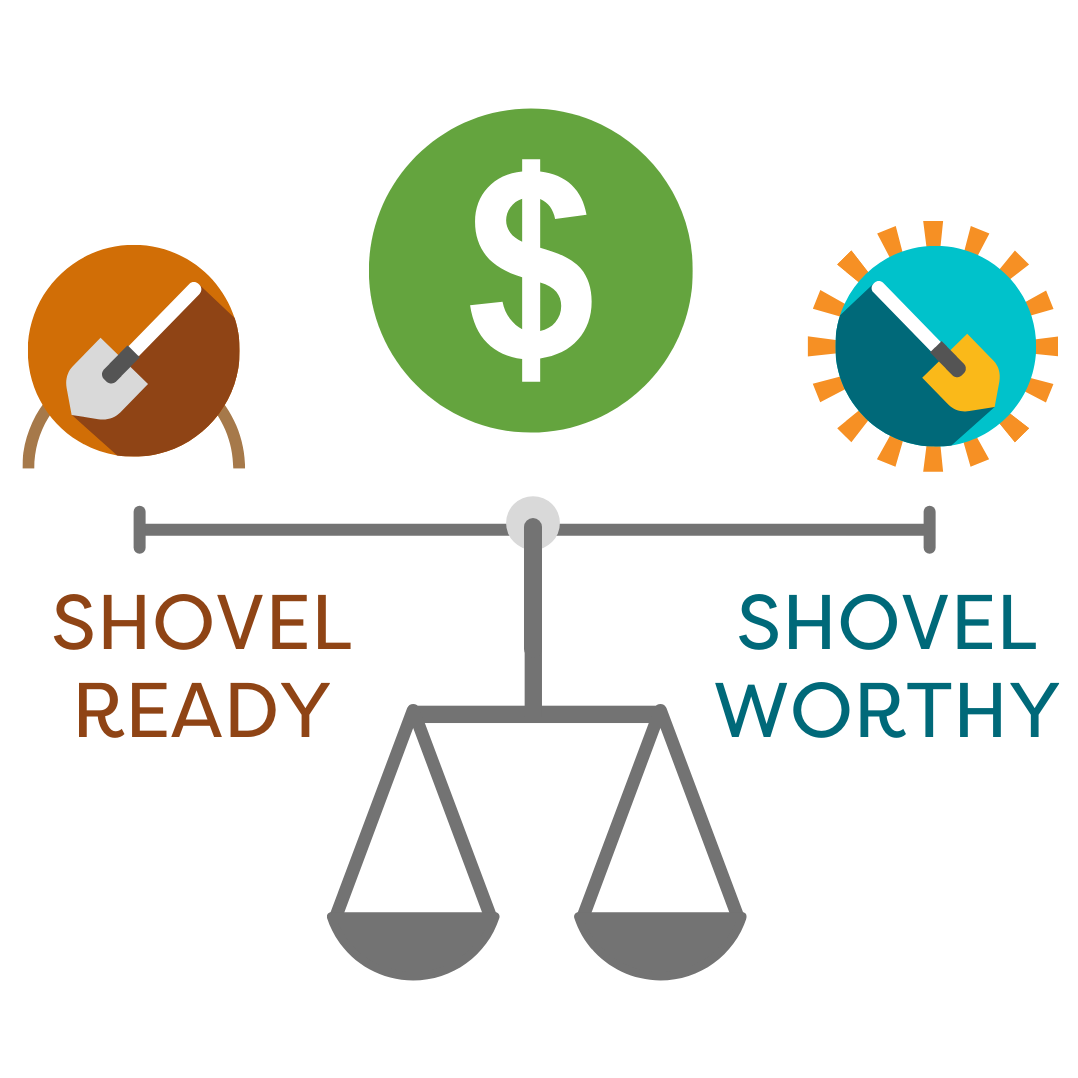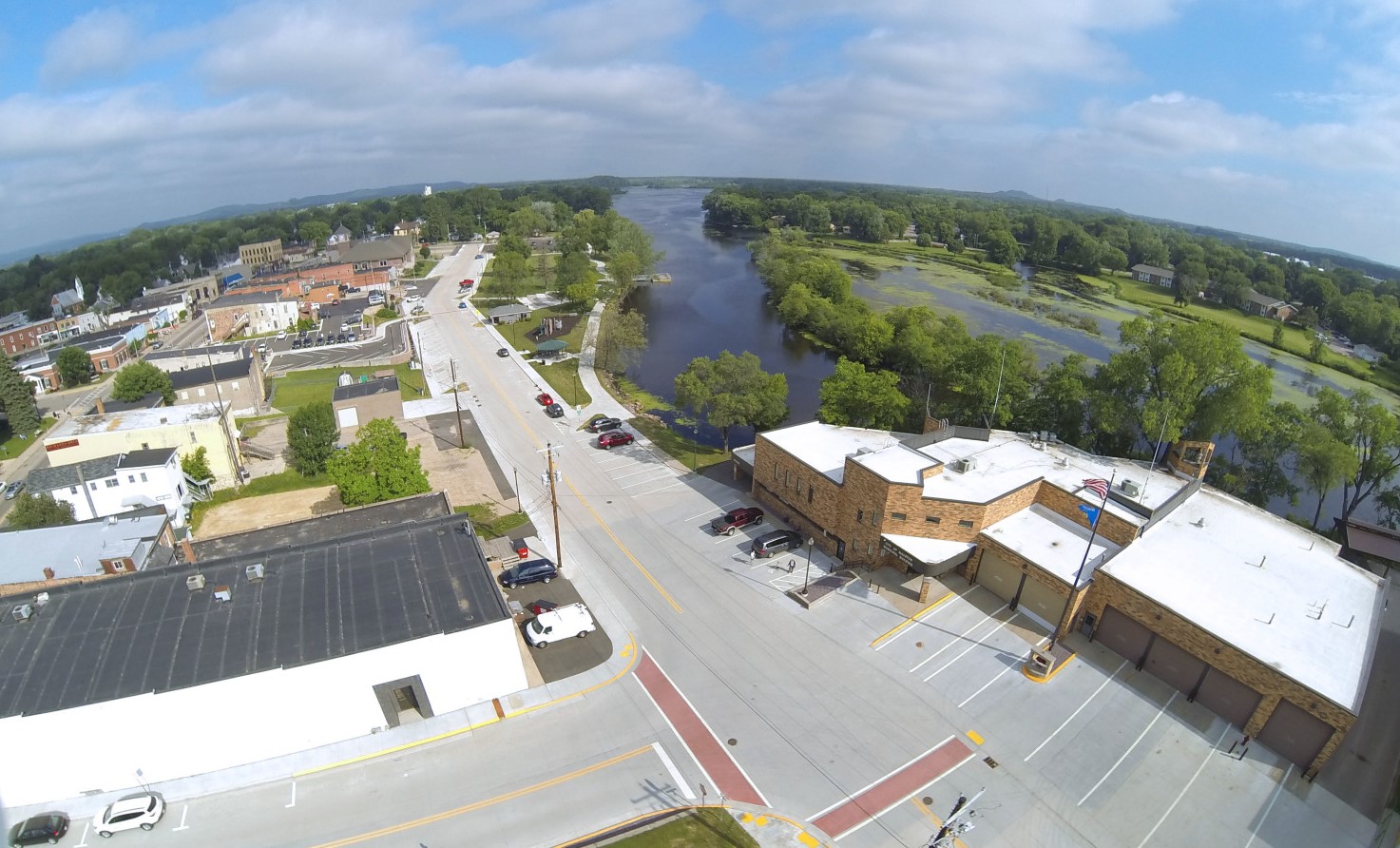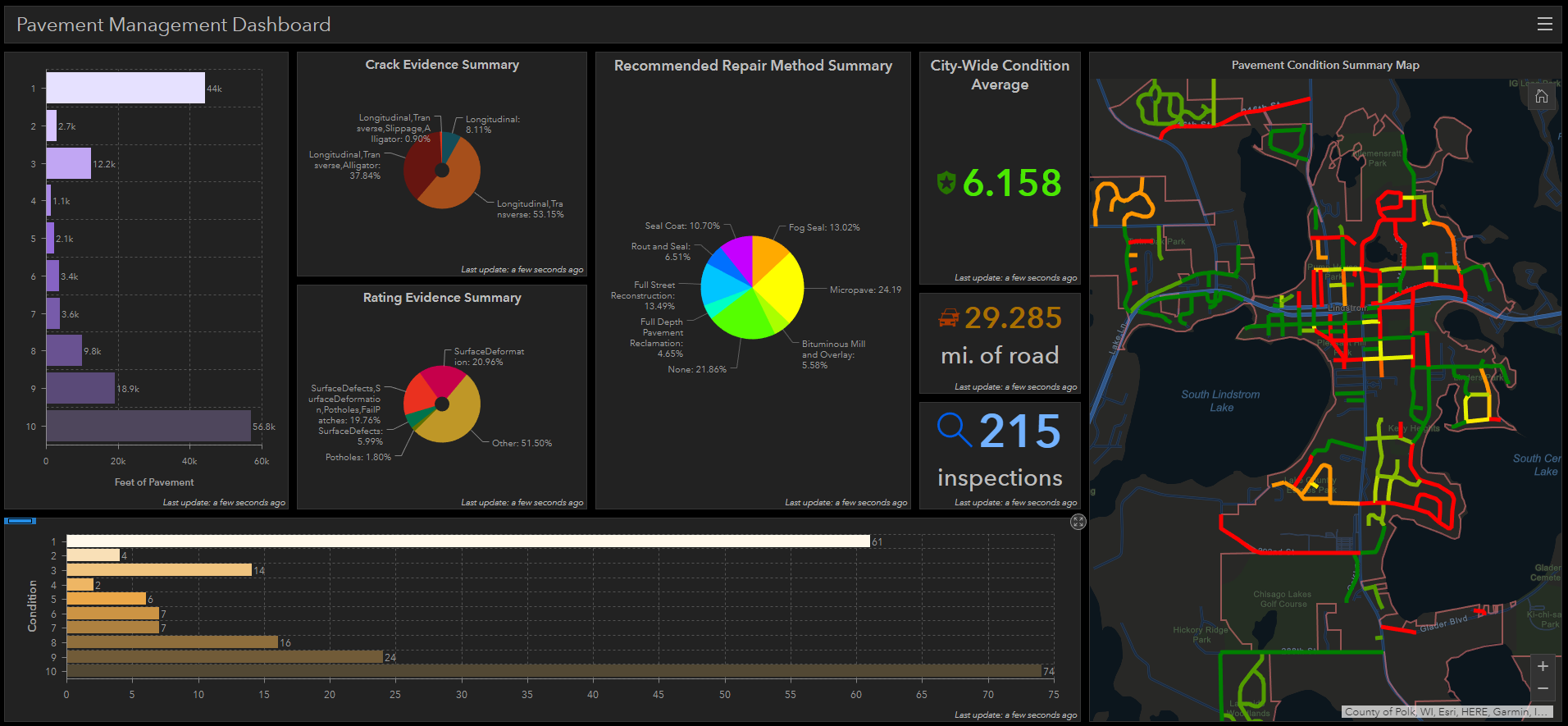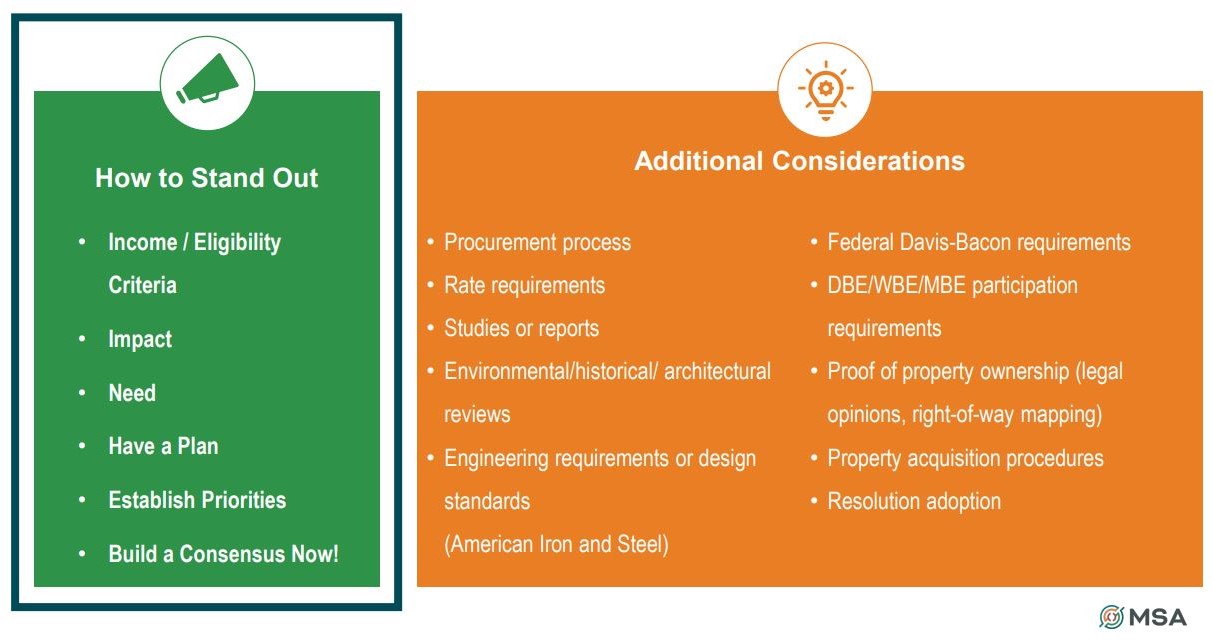Funding is competitive. Your application needs to show that your project means business.
It’s no secret that even the friendliest of neighboring communities can become fierce competitors when it comes to funding. Projects on the front burner, back burner, and in varying states of readiness all jockey for prized grant allocations, especially now with federal stimulus funding on the table. So, how do you best position your community for success? Be proactive in your planning, prioritize your projects, utilize data for asset management, and engage with your constituents to help identify projects that are not only shovel-ready, but shovel-worthy.

Proactive planning
It all starts with a plan. Funding agencies want to invest in your community but want to know that their investment is part of an overall strategy for improving the community. The most sensible first step in identifying which projects to move to the top of the funding list is by taking a thorough inventory of all existing plans in place. These can be capital improvement plans, comprehensive plans, facilities plans, park plans, strategic plans or road improvement plans. Some might be collecting dust on a shelf, others might already be your go-to guides and playbooks. Whatever the case, now is the time to review all the materials at your disposal and take a good look at what priorities are identified within them. Perhaps the most important of these is the capital improvement plan (CIP). If your community doesn’t already have a CIP at work, it’s a good time to get one started. If you do have a CIP, be sure to update it annually and use it to guide future decisions, generally looking forward to the next five to 10 years. CIPs are the ideal means to tackle more immediate project priorities, costs, and the identification of timelines to achieve implementation.
A comprehensive plan is a good companion to your CIP. Here, we take a 30,000-foot view of your community within a much larger timeline of 20-25 years. Comprehensive planning means complete planning. A whole and holistic vision for the future. At a minimum, comprehensive plans provide guidance for the physical development of a community, with an emphasis on land use and the transportation network. Most comprehensive plans — either by desire or as required by state statutes — also include guidance on community growth, intergovernmental cooperation, community resources (i.e., agriculture, historical, cultural), infrastructure capacity, housing, public facilities (parks, open space, recreation and trails), and economic development. Increasingly, plans are also providing guidance on sustainability, resilience, hazard mitigation and health. The comprehensive planning process should include a robust public engagement component – instrumental in collecting feedback from those who know the community best. This process is invaluable in helping leaders identify real issues and gain critical support for projects of all sizes and price tags.

Now that you’ve reviewed all of your relevant plans and collected citizen feedback, you likely have a much longer list of projects than you expected. How do you go about narrowing down your selections and deciding which to elevate to the top of the wish list? We generally recommend starting with two project buckets: infrastructure concerns and non-infrastructure concerns. Those in the infrastructure bucket might include sewer, water, stormwater, street or critical public facility projects. Those in the non-infrastructure bucket, things like planning, development or gateway projects, or things like park and recreational improvements. Once you have your projects categorized, then you can ascertain which funding is the best match for each project, keeping in mind that funding programs can vary greatly by state, year, and with respect to different eligibility criteria.
When it comes to infrastructure projects, the price tag associated with rehabilitation or replacement can be huge. While surface maintenance, aesthetic repairs and short-term solutions might be the easier, less expensive route, many infrastructure projects require more than just a Band-Aid fix. Take an honest assessment of the condition of your community’s public works systems. A great deal of our nation’s infrastructure is in a state of severe deterioration, with many sewer and water mains over 50 years old. As these systems reach or surpass their life expectancy, choose to invest in projects that will bolster their reliability, safety and long-term effectiveness. While they may be more costly up front, most of these projects will actually pay dividends in the long term.
GIS for data-driven asset management
In order to best assess the state of your community’s infrastructure, you’ll need to rely on data. Studies, system investigations and detailed documentation are critical in being able to make objective, fact-based decisions about where and when to apply precious funding dollars. More and more, communities are turning to GIS for this “asset management” process. GIS makes it easy to collect, assess and track the condition of infrastructure with real-time, location-based data. Prior to these GIS advancements, we relied upon the transfer of knowledge from our more seasoned public works staff – one or two people with records in their heads about approximately when systems were last updated and what general work was completed, which misses a key opportunity for digital documentation. Having hard data makes decision-making easy. Leaders can more easily answer the “why” of project investment when the public or council come asking. Data also removes all subjectivity from the equation and allows communities to identify priorities based on facts. Savvy funding pursuits
Savvy funding pursuits
Now that you have better identified your top community priorities, it’s time to go after those coveted local, state, private and federal funding dollars. Competition is fierce, and your application needs to prove both project need and project worth.
The funding industry is more exciting and intricate than ever, particularly with federal stimulus funding being released in response to the COVID-19 pandemic. It seems to be the indication that stimulus funds will lean toward supporting higher-profile, critically important projects that can prove a needed and positive impact on the community at hand. Thus, the “shovel-worthy” term that has now become such a common part of our language. This is different than our experience in 2008. At that time, the award of stimulus dollars seemed to focus on projects that were simply shovel-ready. If your designs were buttoned up tight and you were ready to move dirt, you’d more likely get funding. Today, that shovel-readiness is still important, but we are seeing a moving of the dial toward projects that have been more thoroughly planned, vetted and chosen on merit to benefit the long-term health and vitality of the community. Aside from showing project readiness and project worthiness, there are a slew of other program-specific elements to consider long before submitting your funding application. Take the time to research program eligibility criteria, pertinent income limits, procurement processes, rate requirements, study or report requirements such as income surveys, necessary environmental/historic/architectural reviews, engineering or design standards, federal Davis-Bacon wage mandates, disadvantaged/minority/woman-owned business program participation, or advanced proof for things like property ownership, acquisition, or the adoption of associated project resolutions by local council or board.
Aside from showing project readiness and project worthiness, there are a slew of other program-specific elements to consider long before submitting your funding application. Take the time to research program eligibility criteria, pertinent income limits, procurement processes, rate requirements, study or report requirements such as income surveys, necessary environmental/historic/architectural reviews, engineering or design standards, federal Davis-Bacon wage mandates, disadvantaged/minority/woman-owned business program participation, or advanced proof for things like property ownership, acquisition, or the adoption of associated project resolutions by local council or board.
Finally, have an overarching financing plan, including goals and contingencies. Be prepared with your community infrastructure data to support your financial requests. And, buffer your federal and stimulus funding applications with support from local funds, grants and low-interest loans.
To learn more, tune into our on-demand webinar where we take a deeper dive into each of these topics and discuss a variety of funding success stories in the City of Elgin, Iowa.

